Brief History of Computer Games: 1981
The Apple II influence continues
![]() By: E. Bolognesi
By: E. Bolognesi
Published: 16 September 2019, 5:19 pm
Let's continue our journey with the fourth chapter of the series.
In 1981, the career of the PET was over. Commodore was now focused on the promotion of the newborn VIC-20.
This new 8-bit computer had the 6502 CPU (the same used on the PET, Apple II, and Atari 8-bit), but it included a new video chip called "VIC", designed for arcade machines. The VIC-20 had only 5KB of RAM, it didn't have bitmap graphics, and a text mode with only 22 columns. Those were meager specs even for that time, but it was the first color computer to cost less than $300.
The VIC-20 was released initially in Japan in 1980 and 1981 in the USA and Europe.
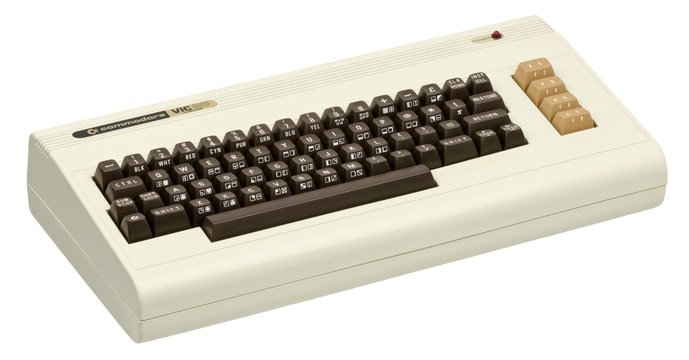
Commodore asked Adventure International to publish some of their adventures for the launch of the VIC-20. Considering that the computer didn't have enough memory, the games were released on cartridges. The same solution was used on the first coin-up conversions, such as Pac-man and Rally-X.
In the meantime, the Apple II sales were going well, with 210k units sold. In 1981, the Apple II also dominated in terms of games released, with more than 250 titles. More than any other platform.
But it was not just a matter of numbers: Apple II was the platform of choice of the emerging game developers.
One example is Castle Wolfenstein, the first stealth-based game, which inspired Wolfenstein 3D by id Software. Designed and programmed by Silas Warner, the founder of Muse Software, Castle Wolfenstein was an incredibly advanced action-adventure for the Apple II. The player had a lot of freedom and could decide between a more "aggressive" approach or a stealth/less violent strategy. It was also the first game to include digitized speech.
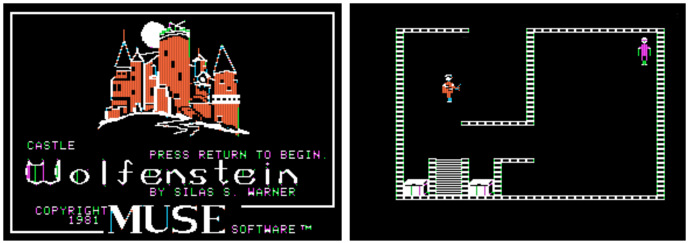
Another Apple II game was Softporn Adventure. Programmed by Charles Benton in Applesoft BASIC, this text adventure is the first commercial erotic computer game. On-Line Systems published it, and Roberta Williams appears in the famous "hot tub ad" that generated so much controversy.
Not many know that the first Leisure Suit Larry game, released in 1987, is a graphic adaptation of Softporn Adventure.
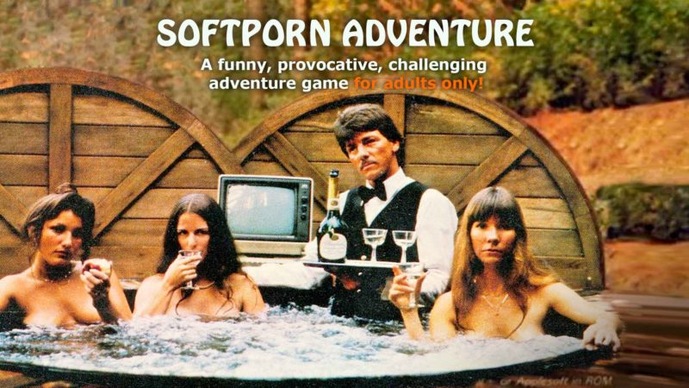
In June 1981, Richard Garriott completed and released Ultima, the first chapter of one of the most popular video games franchises ever. Garriott programmed it in BASIC on his Apple II Plus. The game was much more complex than Akalabeth and more RPG-oriented, with a story that includes fantasy and science-fiction. But apart from this, there's another remarkable detail about this game. To render the vast world, Garriott had to introduce a technical innovation: tile graphics.
Just like Mystery House, storing all the graphics of the game world would have been impossible, considering the limits of the home computer at the time. So the idea was to define a set of tiles, for example, grass, trees, rocks, water, and then draw the game map like a giant jigsaw puzzle. It was a technique already used in arcade games, but it was the first time somebody used it in a computer game.
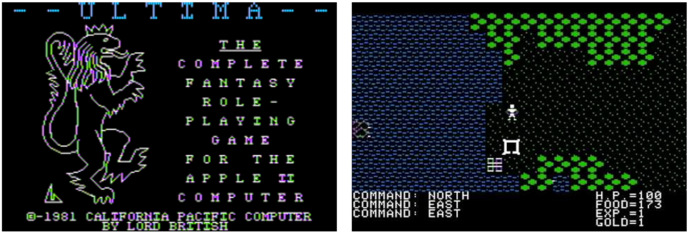
A few months later, Sir-Tech published Wizardry, another milestone in the history of computer RPGs and a fierce competitor of Ultima. Andrew Greenberg and Robert Woodhead created a pure "dungeon crawler". Unlike Ultima, primarily based on exploration and story, Wizardry was mainly based on fight. It introduced a complex and well-balanced combat and characters progression system, with rules not very different from D&D. It was a much more mature product, playtested for almost one year. It was a commercial success, becoming the most popular Apple II game of the year.
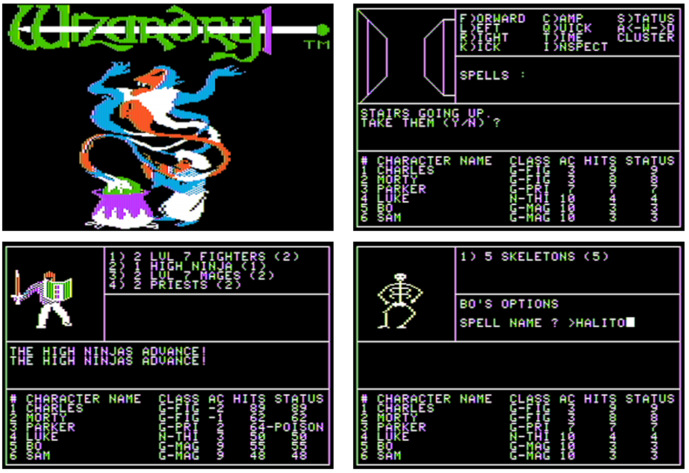
As you can see, the big titles were all created for the Apple II. Why not for the Atari 800, released only a few months after the Apple II Plus, in 1979?
The Atari 800 had a 6502B microprocessor (2x faster than the Apple II chip, 6502), a sound generator, and a separate graphics chip supporting hardware sprites, scrolling, and colors. The hardware was not so different from some arcade cabinets. The Atari 800 is often compared to the Commodore 64, which was released almost three years later.
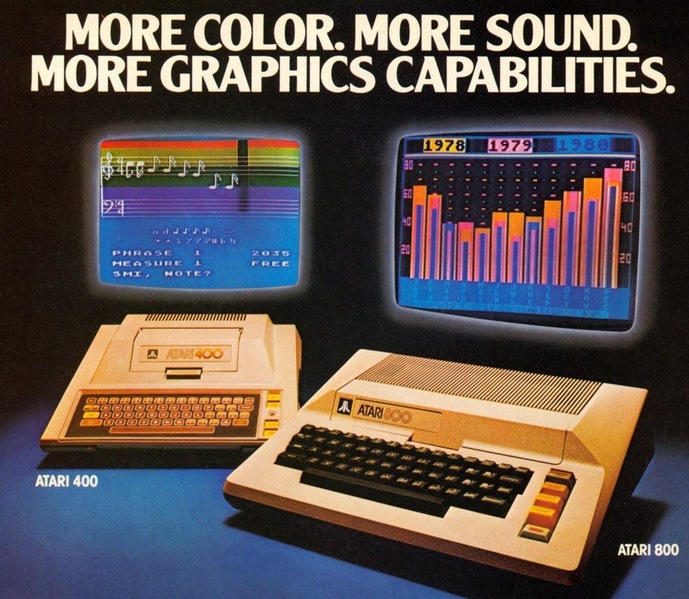
So, if colors and bitmap graphics gave an advantage to the Apple II, why can't we say the same for the Atari 800? Why didn't it become as popular as the Apple II among game developers?
Don't get me wrong: the Atari 8-bit series would be successful in the following years. The number of games released would match the games released for the Apple II. And we will see that some legendary game designers started programming on Atari 8-bit.
But this platform would never become as influential as the Apple II, probably for a combination of reasons: high price, non-professional look, lack of fast floppy disk support. Or simply, it arrived too late, when most programmers were already in love with the Apple II.
Besides, Apple was working a lot with schools. Students had the chance to use the Apple II and learn how to use it; this has helped create a generation of young game creators (such as Richard Garriott) whose favorite machine was the Apple II.
In the end, in 1981, there were a lot of Atari 8-bit releases, almost 200. It was the second platform after the Apple II. Anyway, most of them were ports of games previously released on other platforms.
While the TRS-80, after an incredible 1980, decreased slightly, but it was not dead yet, and it took third place.
Talking about other computers, we already mentioned the Commodore VIC-20, but in 1981, there were two more arrivals: an even cheaper machine was the Sinclair ZX-81, launched in the UK in March 1981. It had only 1 KB of RAM, a monochrome display, and a graphic mode with 64 × 48 pixels.
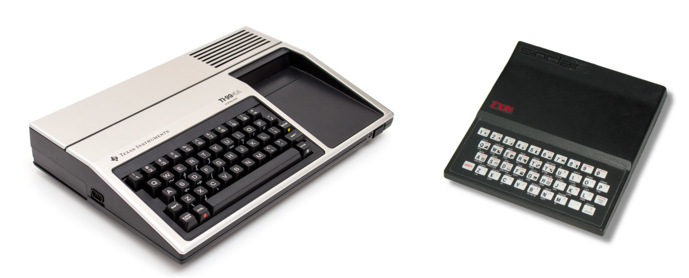
Completely different was the TI-99 4/A, considered the first 16-bit computer. Texas Instruments released it in June 1981. The specs were quite good: a TMS9900 microprocessor, 16KB of RAM, 16 colors, a bitmap mode with 256×192 pixels, and hardware sprites.
Despite their success in sales, just like the VIC-20, none of these three computers will have a tangible impact on the history of computer games.
